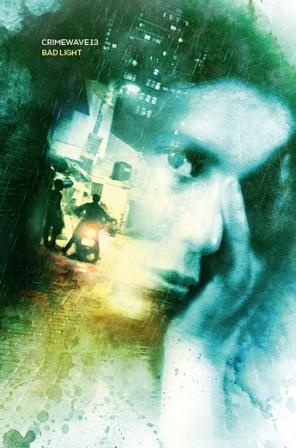This is the last article you can read this month
You can read more article this month
You can read more articles this month
Sorry your limit is up for this month
Reset on:
Please help support the Morning Star by subscribing here
Crimewave 13: Bad Light
(TTA Press, £12)
THE dozen pieces in Crimewave 13 explore a broadly common theme — the utter blurring of the traditional boundaries between the criminal and the victim, with the trajectories and locations of each of the stories quite distinct from each other and the clever use of partial perspectives confounding the reader throughout.

Morning Star reviewer Mat Coward gives a criminal’s view of the inherent contradictions within capitalism as identified by Karl Marx’s hypothesis of the tendency of the rate of profit to fall in a story in which, alternatively menacing and cartoonish, local tough guy Top and his diminished band of hangers-on journey through an economically squeezed town to discover why their customer base no longer has the readies to pay for their product.
Through interrogating local businesspeople and economic experts they quickly discover the hard way that the contraction of credit lines has criminal implications for them as well as their business.
Linda Mannheim, one of four female contributors, focuses on Javier, son of a rich and brutal Nicaraguan landowner, in the days leading up to the fall of the hated Somosa regime. By siding with the Sandinistas against his own class, Javier is essentially a criminal in the eyes of his family and the various national guardsmen he encounters in police cells and roadblocks.
But his skill at making and delivering Molotov cocktails directly onto his targets makes him a welcome fighter as the revolution gathers pace and the narrative includes the stand-out line of the whole collection: “The dead are now the fourth tendency of the Sandinistas.”
Andrew Hook touches skilfully on the murky world of religious-based terrorism and delusional male pride in The Al Pacino Appreciation Society, while there’s a refreshing touch of Patricia Highsmith in Georgiana Bruce’s The Art Lovers, in which the damage caused by artistic obsessions throughout the centuries is laid bare as itinerant painter Paul hunts down his muse across the Mediterranean.
Other writers confine the suspense to a narrower milieu, with the tension exquisitely built up in Ralph Moore’s LAM, as his protagonist weaves his way into the affections of a couple in the neighbouring flat.
Pretending to be gay to allay the fears of the brutish male partner, he wins wins their trust and protects Suzie once the wonderfully named Ray Randy Rorem goes on the run. But is Suzie really the object of his interest?
In Nurse, Stephen Hargadon’s focus is on the mind of the terminally ill May. As her body starts to give out, the author articulates her increasingly desperate assertions that her rather humdrum and unimaginative husband is the devil who’s trying to kill her. Her professional acquaintance with medical samples seems to underpin that suspicion.
It’s a story that typifies this collection and the impressive literary conceits and verve of the authors on display.









